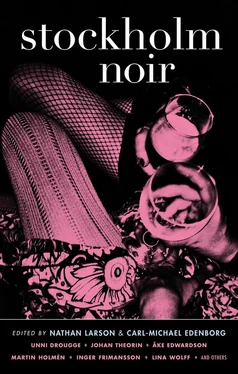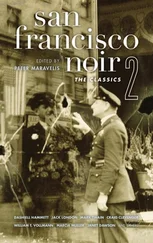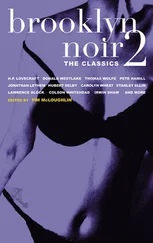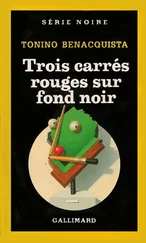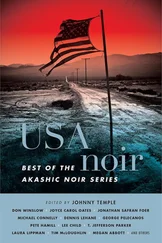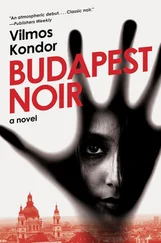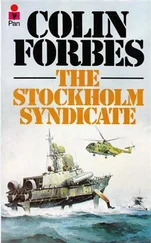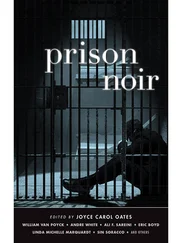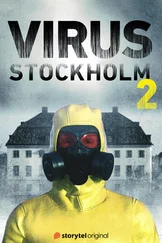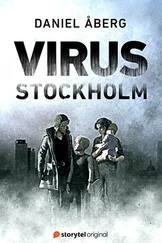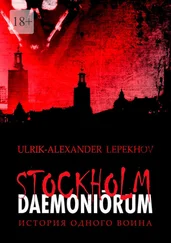Caroline Åberg - Stockholm Noir
Здесь есть возможность читать онлайн «Caroline Åberg - Stockholm Noir» весь текст электронной книги совершенно бесплатно (целиком полную версию без сокращений). В некоторых случаях можно слушать аудио, скачать через торрент в формате fb2 и присутствует краткое содержание. Город: New York, Год выпуска: 2016, ISBN: 2016, Издательство: Akashic Books, Жанр: Детектив, на английском языке. Описание произведения, (предисловие) а так же отзывы посетителей доступны на портале библиотеки ЛибКат.
- Название:Stockholm Noir
- Автор:
- Издательство:Akashic Books
- Жанр:
- Год:2016
- Город:New York
- ISBN:978-1-61775-297-1
- Рейтинг книги:3 / 5. Голосов: 1
-
Избранное:Добавить в избранное
- Отзывы:
-
Ваша оценка:
- 60
- 1
- 2
- 3
- 4
- 5
Stockholm Noir: краткое содержание, описание и аннотация
Предлагаем к чтению аннотацию, описание, краткое содержание или предисловие (зависит от того, что написал сам автор книги «Stockholm Noir»). Если вы не нашли необходимую информацию о книге — напишите в комментариях, мы постараемся отыскать её.
Copenhagen Noir
Helsinki Noir
Stockholm Noir — читать онлайн бесплатно полную книгу (весь текст) целиком
Ниже представлен текст книги, разбитый по страницам. Система сохранения места последней прочитанной страницы, позволяет с удобством читать онлайн бесплатно книгу «Stockholm Noir», без необходимости каждый раз заново искать на чём Вы остановились. Поставьте закладку, и сможете в любой момент перейти на страницу, на которой закончили чтение.
Интервал:
Закладка:
Stockholm Noir

Introduction
While the City Sleeps
To the tourist, the city of Stockholm appears a shimmering dream. Laid out on a series of islands, it is verdant, clean, and surrounded by crystalline water. On paper, Stockholm is paradise. And in some respects, it truly is. But in most respects, it is anything but.
While Stockholm is Sweden’s capital, crown jewel, and the seat of its monarchy, it’s impossible to understand the city without taking a closer look at the country as a whole. Its citizens are largely happy to prop each other up, paying taxes into a theoretically fantastic system of free health care, education, generous maternal and paternal leave, an expectation of six-to-eight-weeks paid annual vacation. Culture and the arts are valued and heavily subsidized. Government-sponsored graffiti contests, concerts, crafts fairs, and municipal skate parks abound. If born into this system, you can expect a very high standard of living.
Yes, there is much to be proud of and thankful for as a Swede. It’s a great country, a second home for one of us, the birthplace for the other. There’s a lot to love about Sweden.
Naturally, all is not so simple. Sweden, a famously neutral country, is one of the world’s biggest arms dealers. The Swedish role during World War II was... complicated . The extreme right wing is on a meteoric rise, as expressly isolationist/anti-immigrant groups steadily gain a foothold in the country’s government. While the myriad political parties create coalitions in order to survive, Sweden edges ever closer to a two-party political system, with the once-colorful spectrum of political voices narrowed and watered down.
Sweden is the home to multinationals like drug giant AstraZeneca, Spotify, Volvo, and, of course, IKEA — that benign beacon of modest conformity, still unable to shake the faint but persistent whiff of fascism that has surrounded it since its inception.
Like nearly everywhere else in the world, American exports such as McDonald’s, Starbucks, etc., are creeping in. There exists a shockingly vicious tabloid culture, and Swedish television is dominated by American films and TV shows, or homegrown versions of Fear Factor, Survivor , and The Voice — though this is a relatively recent development. Until the late 1980s, there were only two (state-run) TV channels. Programming was sourced as much from the East — Finland, the Soviet Union — as it was from the West.
Swedes, being modern Westerners, very naturally want their lattes, the occasional Big Mac, streaming Netflix, and their position on the world stage, whatever the field. Swedes want to make money and compete in the global marketplace. The end result is something like free-market socialism. And why not? But can the two “extremes” (capitalism, socialism) coexist in this way? With the appearance of “private” health clinics, bringing stratification to the system, the trend toward overseas boarding schools, and the pervasive lure and abundance of all things material... well, it challenges the myth of a classless society, as only the elite will be able to indulge in these “enhancements.” Naturally, this inspires a simmering anger amongst some of those less well endowed.
Returning to Stockholm itself — while this town is admittedly not a gnarly, crime-infested metropolis, the city is still plenty dark. Stockholm has two very distinct hearts that beat, each absolutely dependent on the other. One heart is lodged deep in the moneyed streets of Östermalm and Vasastan. The other beats deep in its suburbs, essentially an inversion of the inner city, an external growth of the old Stockholm that serves to triple its population.
This is the front-and-center issue of our age.
A Christian Democrat might describe this outer urban growth as a tumor, or a fungus, a deadly threat to the Swedish social system, to be surgically removed if possible. The left, on the other hand, would be at pains to express its view that this growth is an evolution, to be nurtured like the development of a new fantastic limb with which the entity called Stockholm can do exciting and new things.
Politics aside, we could be talking about Stockholm, London, or New York City when we observe that these dual trajectories can be classified as monied — indigenous, blue-blooded, white, comfortably settled; and aspirational — newly arrived, generally nonwhite, ready to work hard and climb the class ladder. In other words: the immigrant.
Pragmatically, all systems would fail without the aspirational heart. It’s this segment of the population that keeps the wheels running, the kitchens of fancy restaurants staffed, the hospitals functioning, the garbage collected. And in a country like Sweden, with its tremendous tax-driven health care system, you need a lot of folks pulling levers to keep everything upright. There should be nothing controversial about this observation.
Complexities arise when we acknowledge an obvious trend: increasingly, the dominant group (the indigenous white) no longer wants these core jobs. We can observe this worldwide.
To understand the nature of Stockholm’s outgrowth, we must examine the Miljonprogrammet (the Million Program), the Social Democrats’ staggeringly ambitious 1965 housing blitz, with its aim of constructing a million new homes within a decade — free from misery, bad air, and the disease of the inner city.
The architectural style employed here, almost by necessity, was termed modernist, but the end product seems to bear a closer to relation to functionalist style. To be more direct, most of these structures would not be out of place in the Soviet Union or the former German Democratic Republic.
The earnest, wide-eyed social plan to create “good democratic citizens” was clearly and happily stated as part of the public works project. The predominate living unit was called a normaltrea , a three-room apartment of about seventy-five square meters, designed to snugly contain a family of four.
The last elements of the Million Program — the construction of world-class schools, libraries, playgrounds, and areas of greenery — proved far more difficult to achieve. And the lofty if noble vision to integrate diverse groups of households was, it could be safely said, an abject failure. This was due in part to awkward, hasty construction... and in terms of the utopian vision of world citizens mingling, cross-pollinating — it was not to be.
Two coinciding factors in the late 1960s scuttled these plans, at least in the sense that their architects had intended. First of all, middle-class (mostly white) Swedes might pay lip service to the ideals of the Million Program over drinks — oh, absolutely! But they wouldn’t dare to actually live in these unfortunate places. This dynamic dovetailed with the steady arrival of more “New Swedes” from North Africa, the Middle East, subcontinental Asia, and later the former Yugoslavia, all in immediate need of housing.
A large percentage of Sweden’s Iraqi population resides in the suburban Södertälje, and it’s notable that Sweden has taken in more Iraqi refugees than the US and Canada combined. This arms-open-wide immigration policy is certainly commendable, and is a remnant of the Olof Palme administration: its solidarity with anticolonial struggle and general anti-American posturing. But many Swedes are perhaps not so comfortable with what the fruit of these policies actually look like.
By design, these new communities were self-contained, isolated from the outside world. As such, the immigrant communities of the greater Stockholm area were efficiently (if unintentionally) cut off from the rest of the population.
Читать дальшеИнтервал:
Закладка:
Похожие книги на «Stockholm Noir»
Представляем Вашему вниманию похожие книги на «Stockholm Noir» списком для выбора. Мы отобрали схожую по названию и смыслу литературу в надежде предоставить читателям больше вариантов отыскать новые, интересные, ещё непрочитанные произведения.
Обсуждение, отзывы о книге «Stockholm Noir» и просто собственные мнения читателей. Оставьте ваши комментарии, напишите, что Вы думаете о произведении, его смысле или главных героях. Укажите что конкретно понравилось, а что нет, и почему Вы так считаете.
